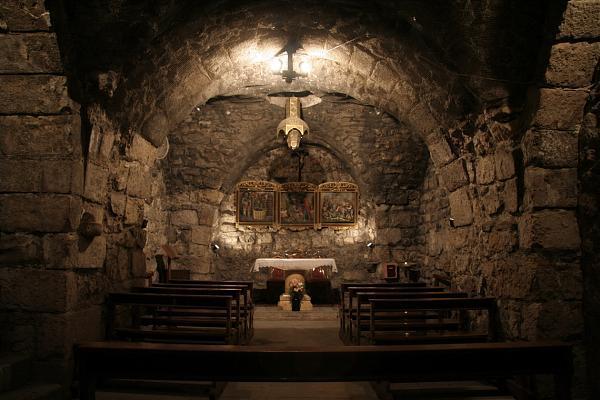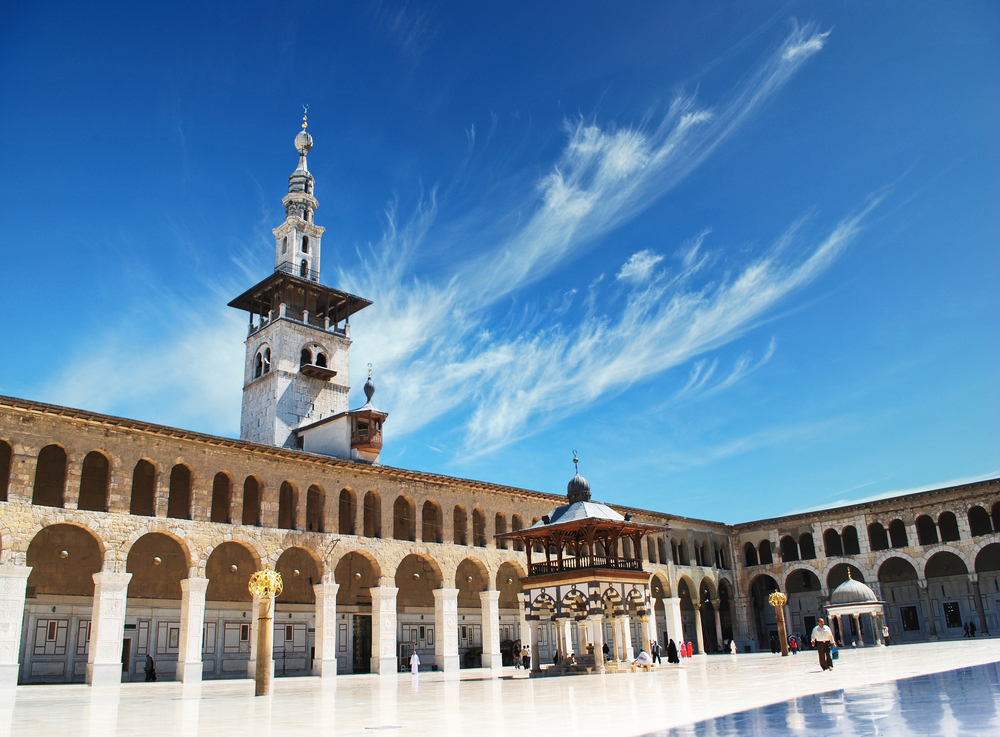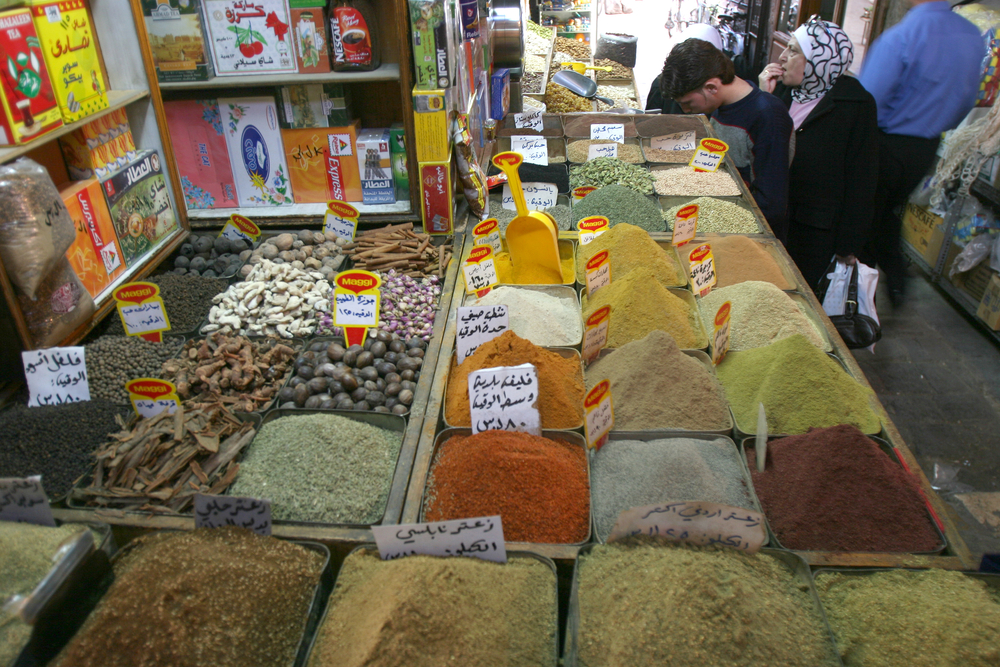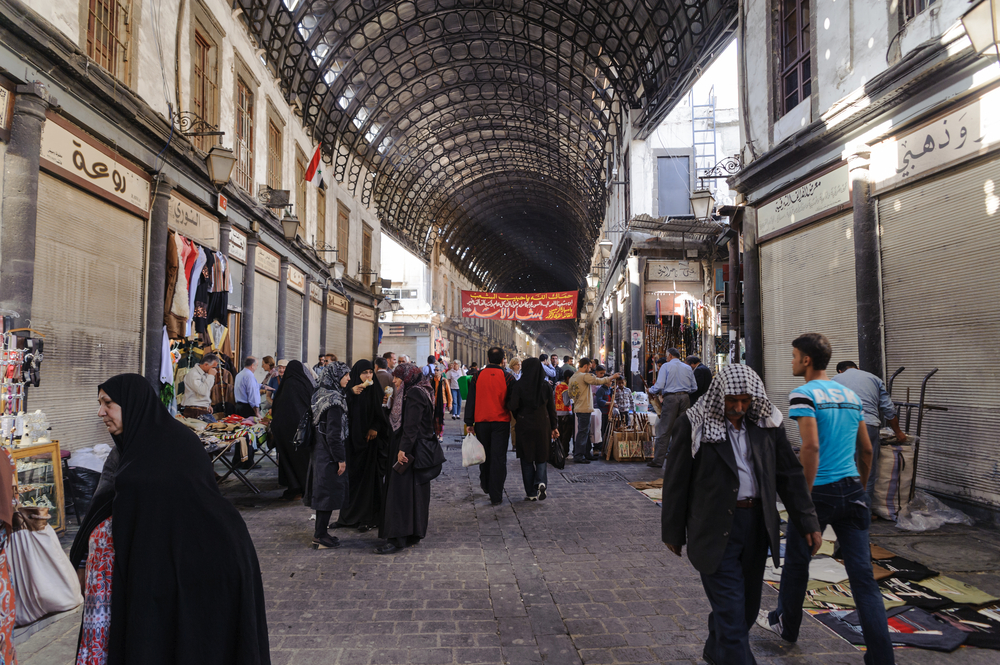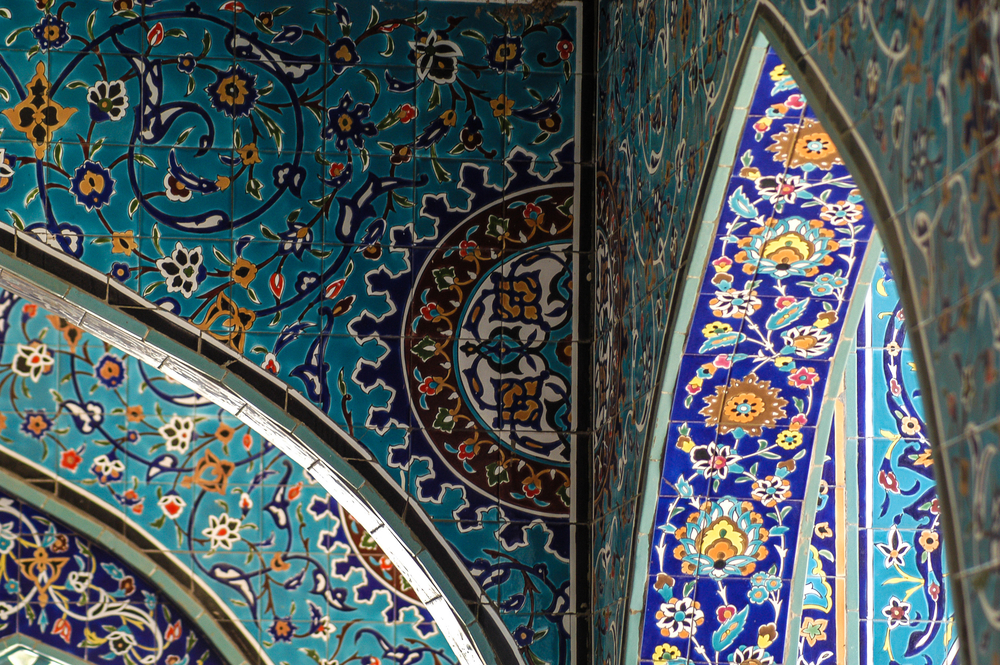Damascus, the City of Jasmine
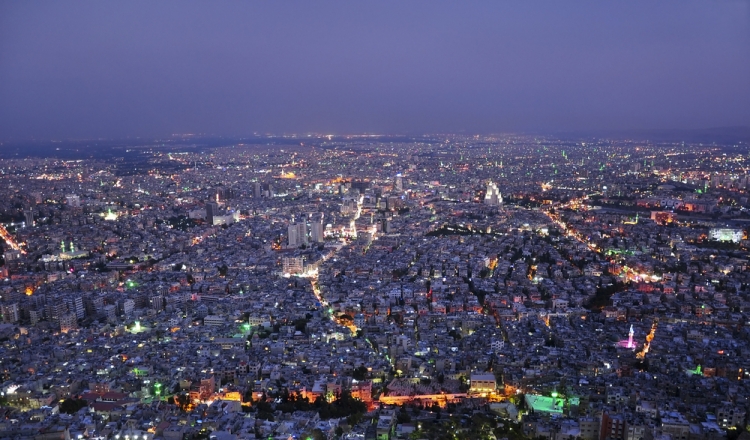
Damascus is one of the oldest cities in the world with a rich history stretching back to 10,000 BC. The city has many names: Damas, Dimashq, Al-Sham, Faiha, and Damascus. The word Dimashq – which is Arabic for Damascus – means irrigated land.
Damascus has been ruled by different tribes, empires, and caliphates over the centuries. Romans, Amorites, Assyrians, Babylonians, Abbasids, Fatimid, Mamelukes, Persians, Muslims, and even the French have ruled Syria. During the Roman rule, the city thrived architecturally. Theaters, citadels, arenas, and arches were built. The city used to be surrounded by a wall with seven doors to protect the city. The bab (Arabic for door) was the only way for people to access the city. The wall no longer exists today, but the doors are still standing, unguarded monuments of the past.
Bab Touma 1950. Image Credit: twitter.com/syriansss"
Damascus is known for its religious diversity. According to some Arabic studies, the city contains 200 mosques, 36 churches, and 10 synagogues, two of which are still in use. Christianity was first introduced to Damascus when Saint Paul entered the city. He was assigned the name Saint Paul of Damascus because, as the Bible tells us, he embraced Christianity on the road to Damascus.
Christianity has a large presence in Damascus with its churches, including Saint Ananias’s Church (كنيسة القديس حنانيا), said to be the remains of the home of Saint Ananias of Damascus, where Ananias baptized Saul (who became Paul the Apostle). This chapel is recognized to be the oldest church in Syria, and one of the oldest in the world. Still frequented by Christians today, some of its remains date back to 5th and 6th centuries.
Saint Ananias Church. Image Credit: Shutterstock/Waj
In the year 634, Damascus was captured by Islam. Damascus thrived the most during the rule of the Umayyad, who built the Umayyad Mosque, also known as the Great Mosque of Damascus, which today is the most important monument in the city. It has served as a place of worship for over a thousand years. It's said that the Umayyad Mosque, before Muslim conquest, had been a Roman sanctuary of Jupiter before being transformed into church when Christianity dominated the region.
Omayyad Mosque. Image Credit: Shutterstock/Waj
In 1516, the Ottomans conquered Damascus and ruled over the area for 400 years, during which wars and massacres provoked many to flee Syria. The Ottomans did bring some remarkable things, however, including Damascus’s famous covered market, or Al-Hamidiyah Souq (سوق الحميدية). Exploring these markets today is one of the most memorable experience for visitors. Souq Al-Hamidiyah is located in the heart of the old city — Old Damascus — right next to the Umayyad Mosque. This market is famous for having its roof over the shops, where visitors can buy everything from clothes (modern and traditional), to food, accessories and, most importantly, spices and herbs.
Spices at Al-Hamidiyah. Image Credit: Shutterstock/vodograj
This market was featured in the Around the World in 80 treasures documentary by BBC, as a man-made treasure. The souq, being in the heart of the old city, is loyal to traditions. You might encounter some people walking around in the traditional Syrian costumes, sometimes serving delicious (and strong) Syrian coffee.
Souq Al-Hamidiyah/ Image Credit: Shutterstock/Oguz Dikbakan
After the Ottomans left Syria after the First World War, the French entered and took over us for a period of 26 years, ended by the Great Syrian Revolt that aimed to get rid of the French. Syria got its independence on April 17, 1946. That day is now a Syrian national holiday.
The most compelling aspect of the city's culture are the old Damascene houses. Their special feature would be having a wide yard with a fountain in the center of the house. Around the yard there are a number of chambers, each serving a purpose — some for guests, others for formal meetings, and of course bedrooms, bathrooms, and a kitchen. The yard is decorated with plants and trees — especially Jasmine. That’s why Damascus is called the "City of Jasmine".
Shrine of Sayeda Zeinab.Image Credit: Shutterstock/Waj
If you go around asking Syrians what makes their city so special, they would definitely say the way people treat each other. You may stop someone on the streets for a question, and the next thing you know is that you are sipping coffee with them. Personally, I think what makes Damascus special is because, to me, it is the city of love. Although I live in Paris, the city of romance, falling in love in Damascus is different. Walking around in the old alleys surrounded by jasmines and old buildings, having dates in old restaurants and eating Syrian food — you can't match Damascus for romance.
Damascus does not only parallel to heaven, Damascus is heaven.


